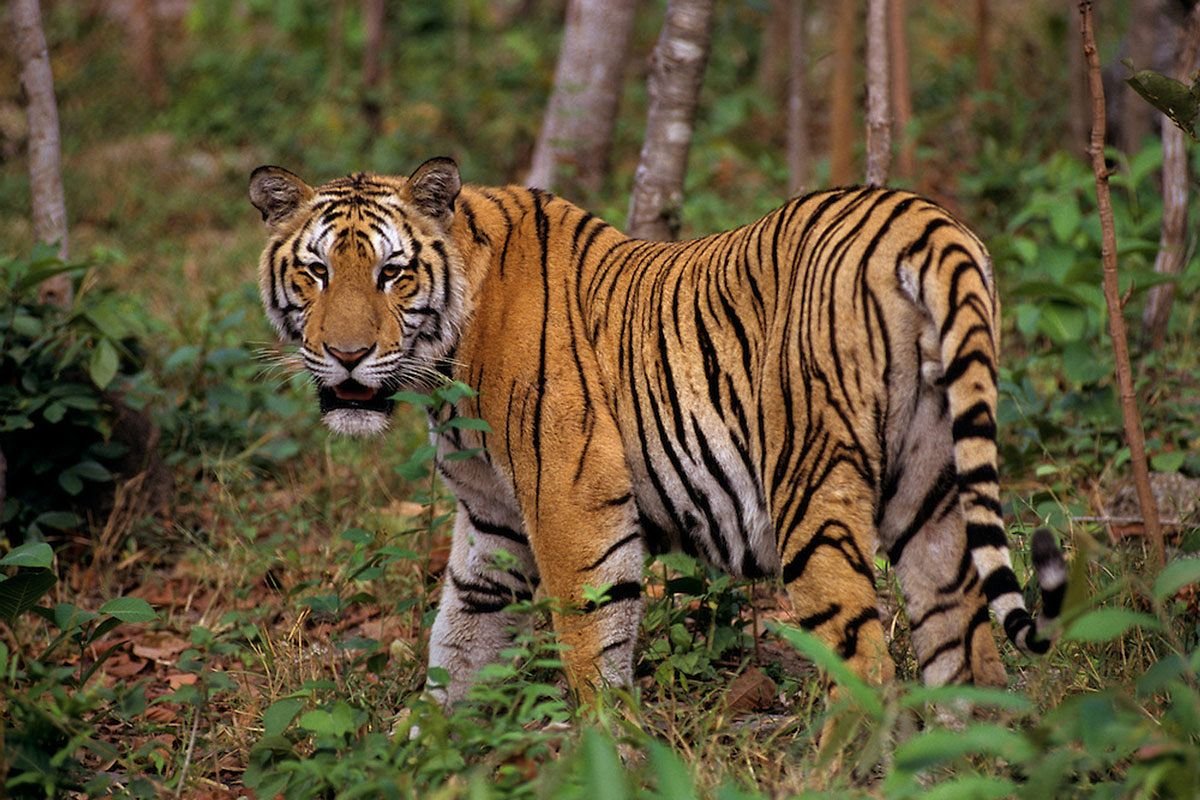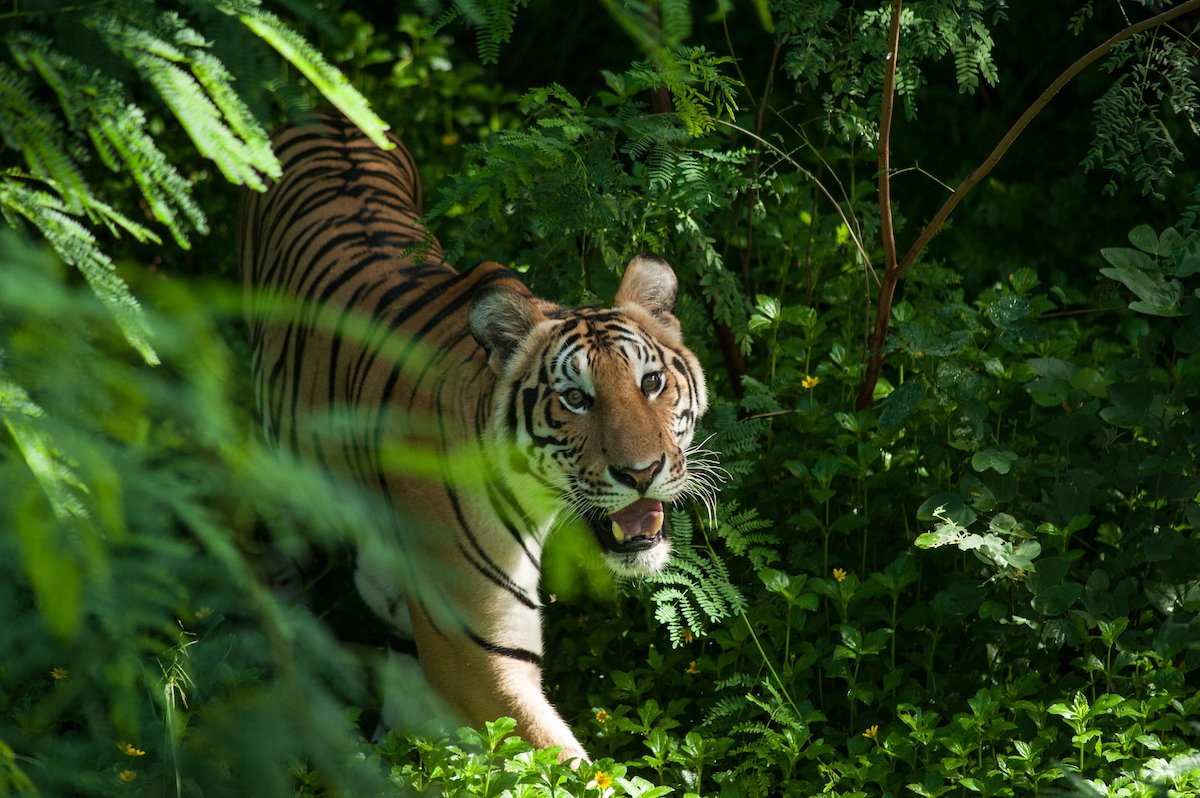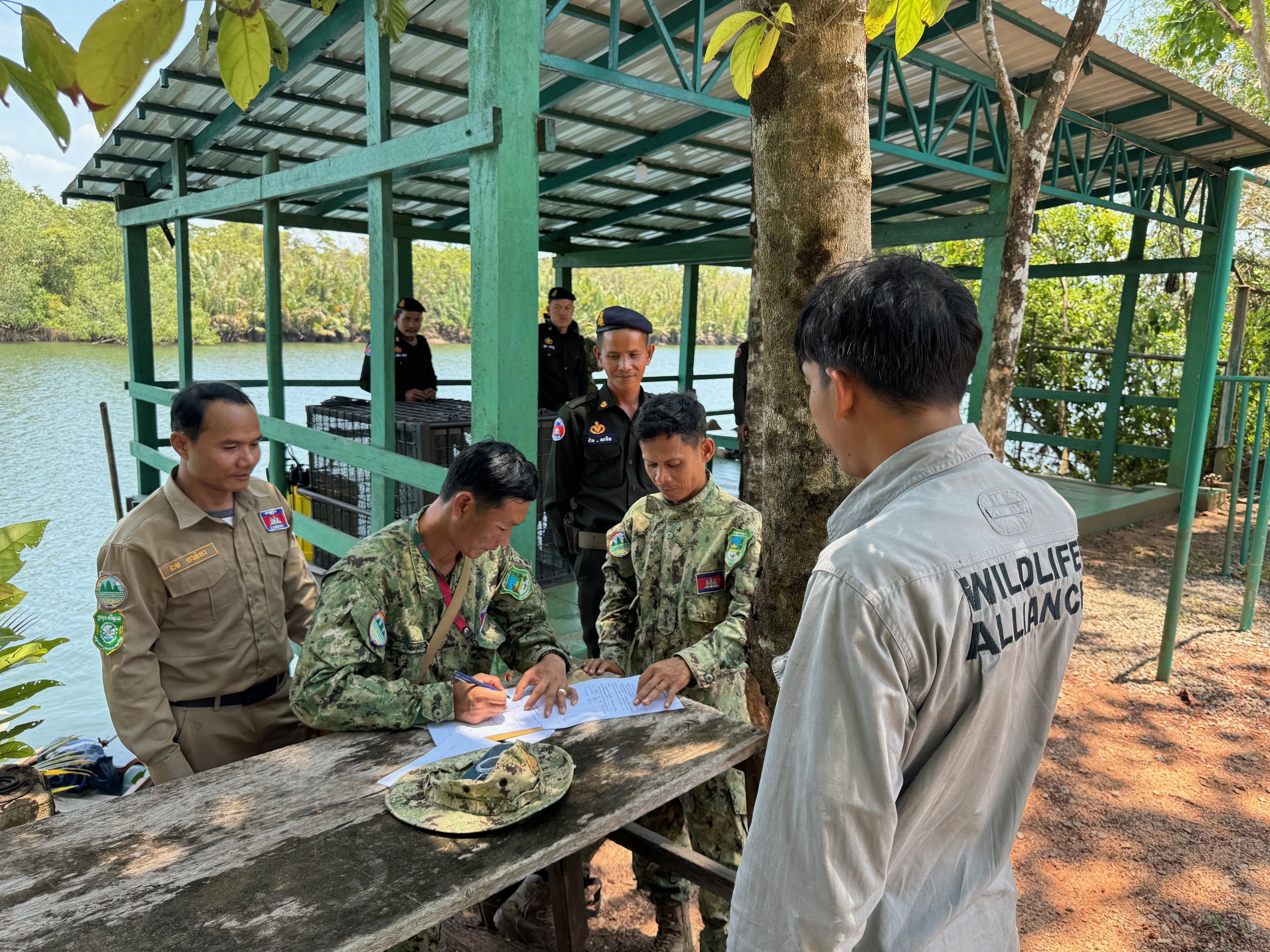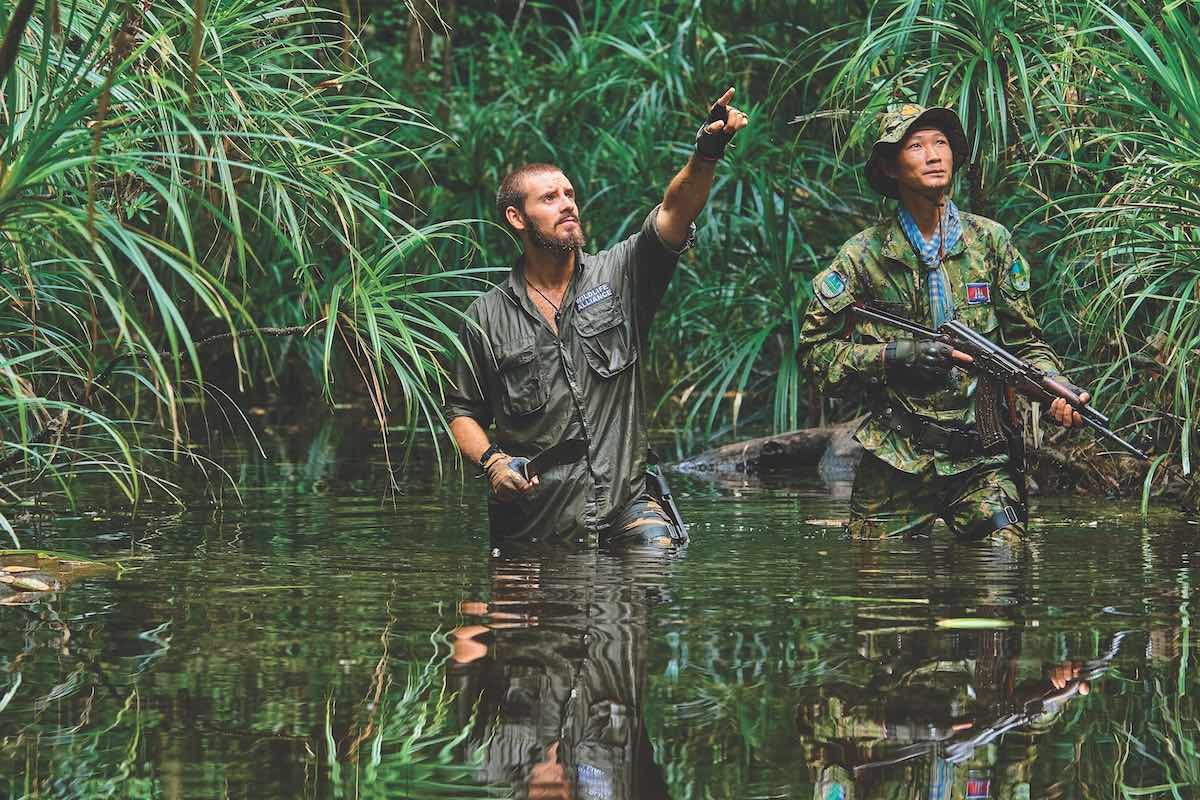GC Cardamoms in Cambodia 2022-24 Progress
Recently, Global Conservation Executive Director Jeff Morgan went on a mission to Cardamoms National Park in Cambodia to assess progress in forest, wildlife, and community protection across over one million hectares of tropical forest, one of the last major intact forests of its size left in Asia.
The team had a very busy week covering hundreds of miles across the park and 12 communities, visiting 6 park stations, joining ranger patrols, and attending community engagement and enforcement strategy meetings.
Global Conservation has invested over eight years and millions of dollars to support the protection of Cardamoms National Park, deploying both of GC's signature programs, Global Park Defense and Community Protection.
Land clearing, large-scale fires, or illegal logging destroyed less than 2% of the forest cover in these eight years, leaving one of Asia's last intact tropical forest ecosystems.
At the same time, Cambodia has lost 30% of its forests in the past 20 years, according to Global Forest Watch. In this context, the success of Global Park Defense and Community Protection to defend such a large undisturbed area for the people of Cambodia is impressive.
The Wildlife Alliance, our conservation partner, and CI Cambodia have tirelessly worked to protect the forests and wildlife from illegal wildlife poaching, hunting, snares, and poisoning.
According to recent estimates, the Cardamom Mountains provide goods and services worth more than US$1 billion, including timber, crops, carbon storage, non-timber forest products (such as medicinal plants), water, and recreation.
The Central Cardamom Mountains Landscape is home to more than 500 animal species, including over 50 species listed on the IUCN's Red List of Threatened Species, such as Asian elephants, Siamese crocodiles, the giant Ibis, hornbills, sunbears, clouded leopards, king cobras, pileated gibbons, and Sunda pangolins.
By deploying Global Park Defense and Community Protection to defend key sectors of the national park and assisting to secure long-term sustainable funding, Cardamoms National Park remains a stronghold for forest and wildlife conservation, despite ongoing battles against land encroachment and illegal industrial concessions (36 stopped to date).
Videographer Mac Woodruff films while the aerial team surveys for poached forest.
After eight years of funding equipment, patrolling, aerial overflights, fuel, and rations, combined with multi-level training, Global Conservation is proud of the incredible progress and successful defense of this embattled national park.
2022-23 Accomplishments
Global Park Defense
Community Protection
Long-term Financial Sustainability
Tiger Reintroduction
The Effect of Global Park Defense in Cambodia
In 2023, Cardamom National Park became Cambodia’s largest protected area, covering nearly 1 million hectares, following the merger of the central and southern Cardamom national parks. The merger of two previously separate protected areas resulted in the creation of a single 926,123-hectare (2.29 million-acre) Cardamoms National Park.
The Cardamoms forest has been effectively defended against constant threats through Global Park Defense, which combines park-wide communications, trailcamera surveillance, high patrol coverage, and dedicated Rapid Response Teams.
We have supported the installation of many of the 1,203 demarcation posts, establishing clear zoning of forest and community areas through active engagement with local communities in GC-funded sectors.
Overall, forest and wildlife protection through more than 24,000 patrols has resulted in 442,870 hectares of rainforest preserved, 3,932 live animals rescued from hunters’ snares, 175,534 snares removed, 9,000 chainsaws and 864 guns confiscated, and 27,721 logs seized.
Communities celebrated the cancellation of a major dam in the Arang Valley, which would have flooded six villages. Regrettably, the Cambodian government is developing two new dams in Koh Kong, set to cost $447.5 million, and five operational hydropower projects are nestled within the Cambodian section of the Cardamoms.



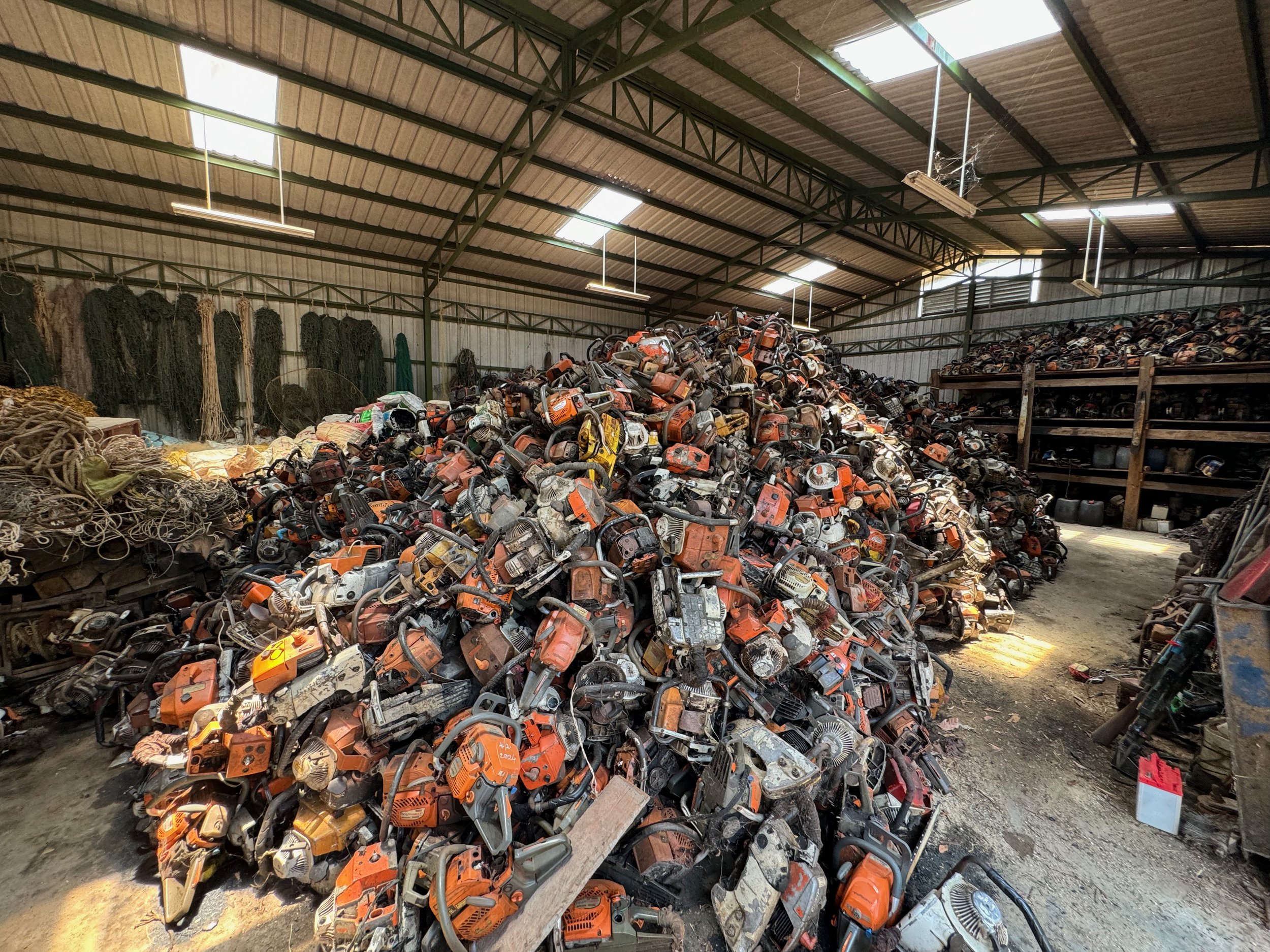
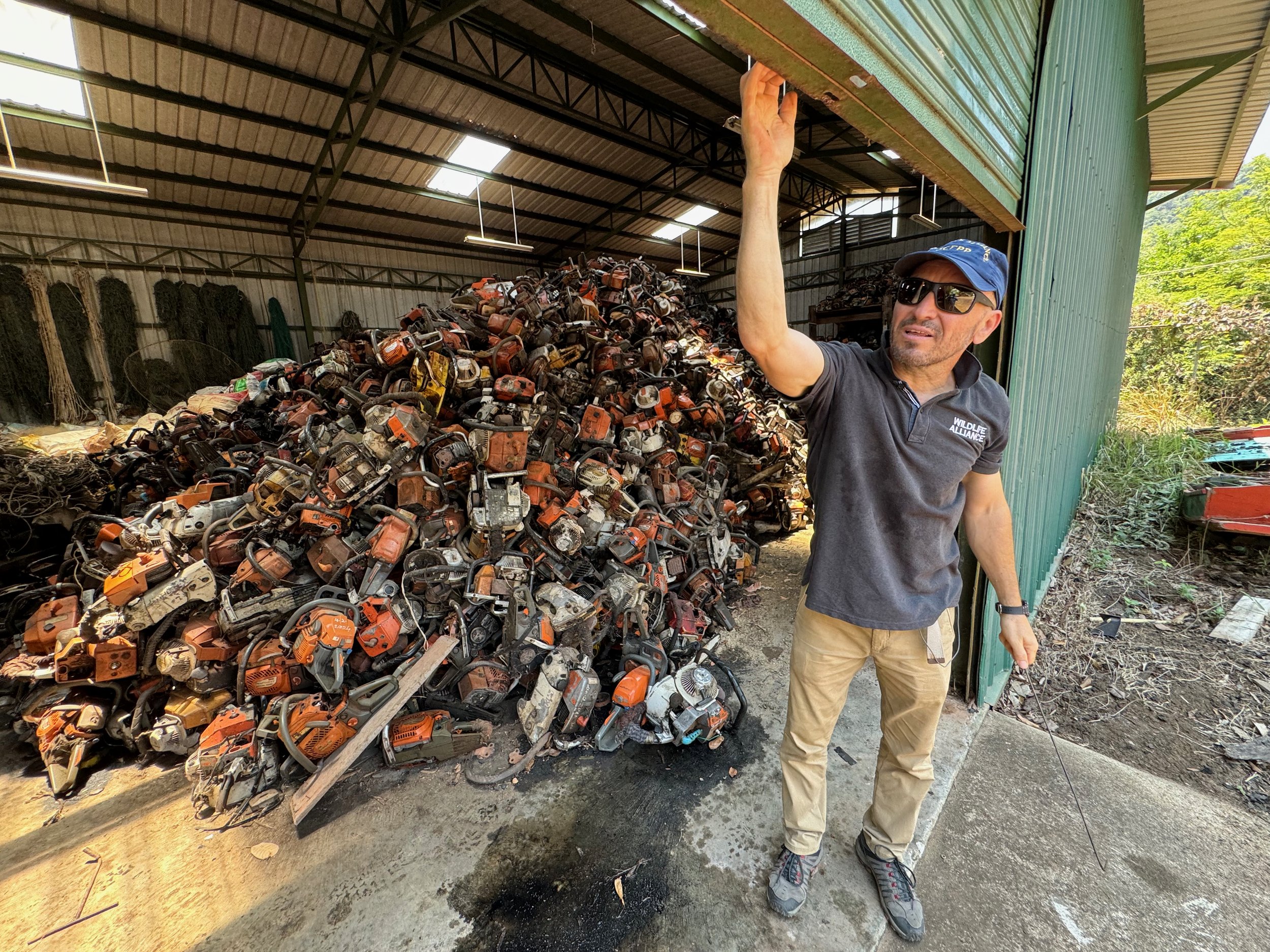
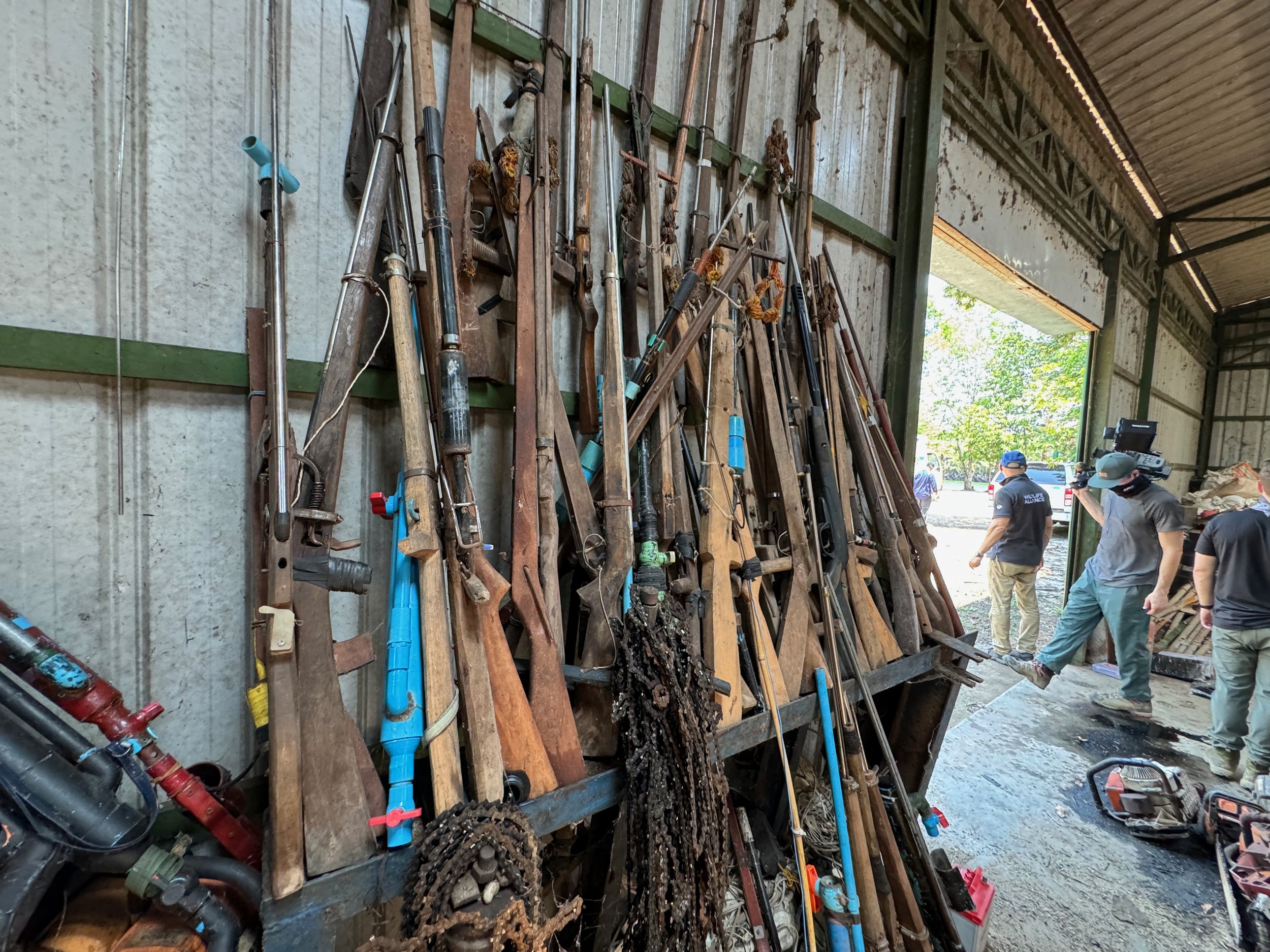
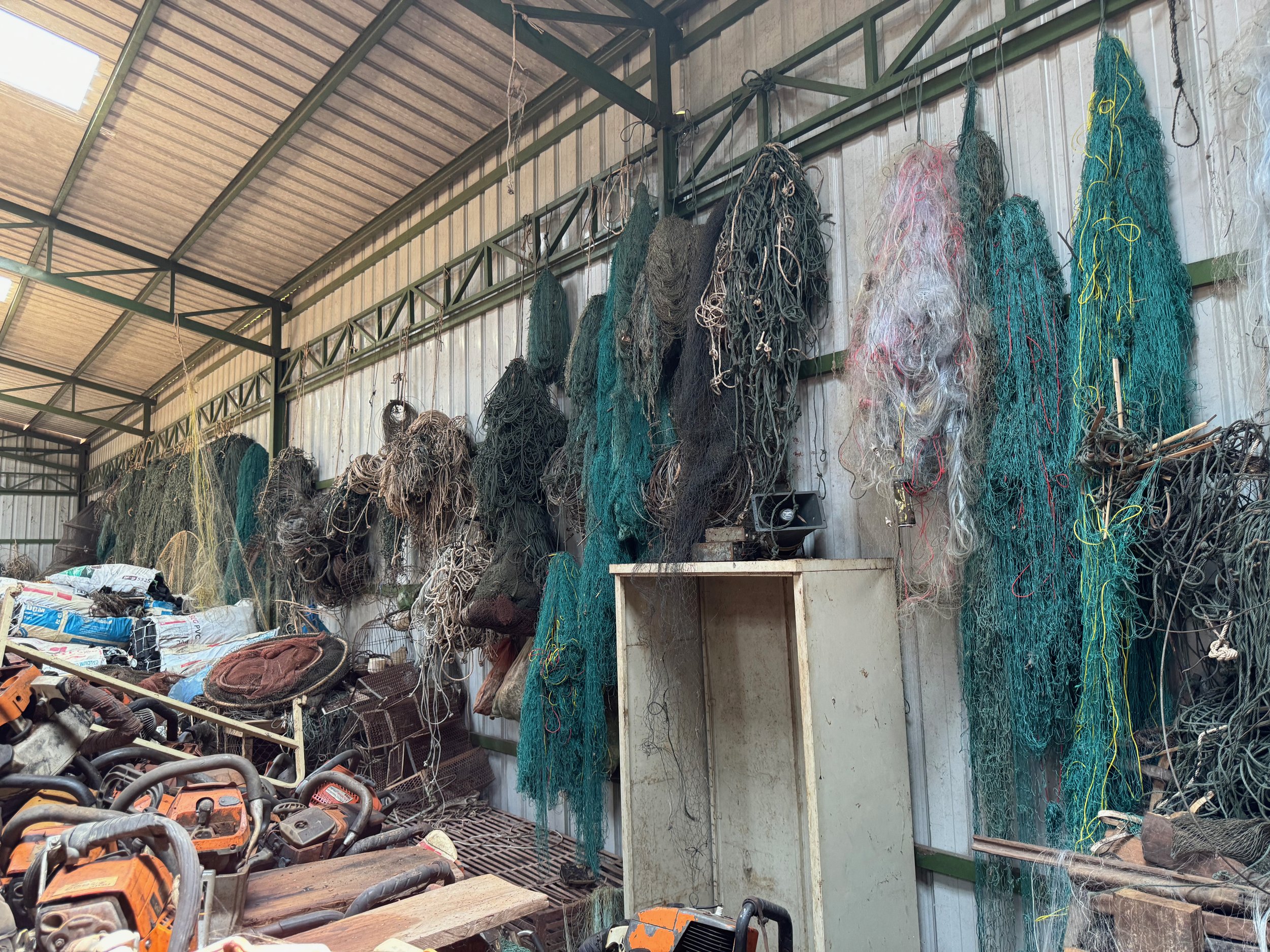
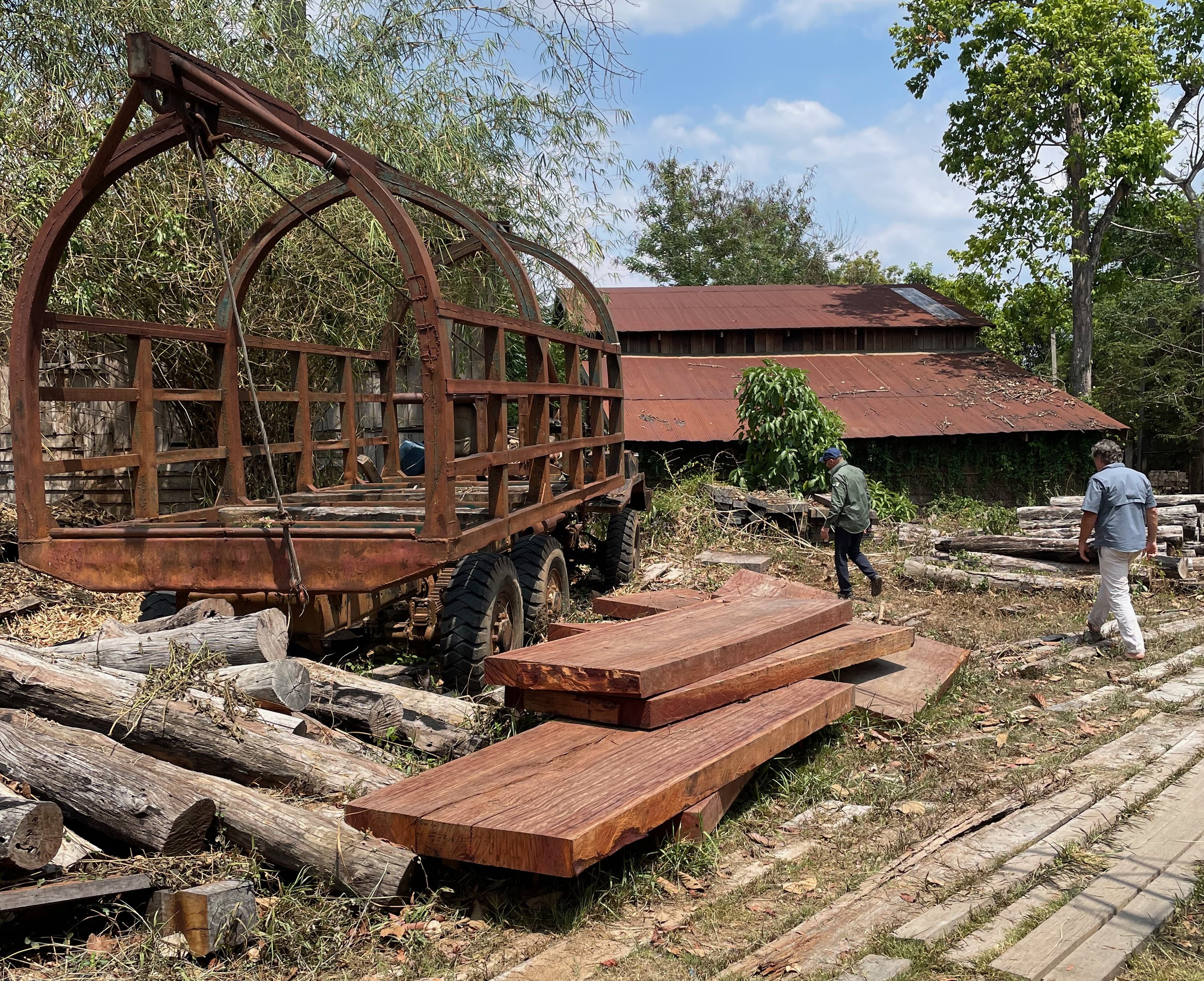
Above: Bob Woodruff and the GC team are shown the sheer number of confiscations from poachers, including chainsaws, weapons, traps, and poached wood.
Between 2021 and 2023, Global Conservation also funded CI Cambodia Park, and wildlife protection resulted in:
Illegal logging and teaching camps identified and removed: 191
Snares Removed: 5,664 and Chainsaws Confiscated: 448
25 instances of illegal logging were identified, involving 39.82 cubic meters of timber.
Seizure and destruction of 28 vehicles, including 3 excavators, 1 truck, 3 hand-tractors, 12 motorbikes, and 8 carts
Two new ranger stations were established.
Equipment and salary supplements for 42 rangers to patrol from six ranger stations
Patrols Conducted: 2,690 covering 20,154 kilometers using cars (3,422 km), on foot (2,286 km), by machine boat (485 km), and motorbikes (13,898 km) for a total of 487 patrols over 655 days and 168 nights.
GIF courtesy of Mongabay.
The map shows the approved sites for the Russei Chrum Kandal and Veal Thmor Kambot dams in Cardamom National Park. Credit: Mongabay.
Community Protection
Local people's land tenure is one of the most important measures of community protection. GC’s partners secured community land tenure across 28 villages in 11 communes, delineating 12,248 land parcels covering 28,883 hectares of land.
Between 2015 and 2021, local communities worked to install 1,203 demarcation posts for the national park and community lands, which included ongoing engagement with over 1,000 local community members.
Community Engagement Teams held meetings in all 29 communities, covering more than 1,000 individual participants. Over 98% of participants supported the project.
Long-term financial sustainability
Global Conservation has helped to ensure long-term financial sustainability through support for three strategies:
Community-based Eco-Tourism
REDD+ Projects for Avoided Deforestation
Long-term commitments from bilateral government agreements
Community-based Eco-Tourism
Our support has also helped to create sustainable community-based tourism in three villages, including Chi Pat and Arang Valley, visited by 23,000 international and domestic tourists, generating nearly $1 million in revenues for locals and employing more than 300 community members.
REDD+ Projects for Avoided Deforestation
GC's support assisted in the establishment of two breakthrough REDD+ projects in Cardamoms National Park: the Southern Cardamom REDD+ Project (SCRP) and the CI Cambodia REDD+ Project, thanks to our critical funding for Wildlife Alliance and CI Cambodia before the sales of REDD Carbon Credits were possible. We anticipate the CI Cambodia REDD+ Project to be operational within the next three years.
Southern Cardamom REDD+ Project (SCRP)
The Southern Cardamom REDD+ Project (SCRP) began in 2015 and aims to avoid 3–4 million tons of emissions per year for 30 years. The project, implemented within the framework of VCS and CCB standards, covers an area of 493,582.6 hectares, which includes parts of Southern Cardamom National Park and Tatai Wildlife Sanctuary. It will protect a critical part of the Cardamom Mountains Rainforest Ecoregion.
The Southern Cardamoms REDD+ Project (SCRP) has secured over $100 million in REDD+ VCS Certified Carbon Credits, investing in park and wildlife protection and local community development programs in joint partnership with local communities for new investments of over $20 million in roads, bridges, health centers, sanitation, solar-powered water wells, scholarships, micro-credit schemes, and technical and financial support to develop successful community-based ecotourism, agriculture associations, and stores.
The VCS defines the SCRP accounting area as 442,871 hectares. The project’s climate benefits include avoiding approximately 3,836,375 tons of CO2 emissions and over 108 million tons of CO2 equivalent throughout the project's duration.
The SCRP Generates Significant Community and Biodiversity Co-benefits.
New and sustainable livelihood opportunities, such as direct employment, alternative income-generating activities, and initiatives to stimulate business investment, to reduce environmental pressure and significantly improve community well-being. To date, SCRP has benefited 5,980 families, including 3,024 in Project Zone communities, and prevented 27.6 million tons of verified CO2 emissions.
Long-term Commitments from Bilateral Government Agreements
Global Conservation co-funded the initial million-dollar investment that CI Cambodia needed to secure long-term sustainable financing of $15 million over 10 years from the Legacy Landscape Fund (LLF) of Germany, with Proctor and Gamble providing matching funding of $5 million.
Camera trap image courtesy of DNP/Freeland/Panthera.
Tiger Reintroduction: First in the World
For the first time in history, four tigers will be relocated from India to Cambodia to breed and re-establish a viable population in the Cardamoms National Park. Tigers need a large, continuous range, abundant prey, and protection from hunting. Cardamoms National Park offers a vast expanse of forest cover, grasslands, and wetlands that are ideal for tiger reintroduction.
The Cambodia Tiger Action Plan (CTAP), which reflects Cambodia's commitment to the TX2 global goal to double tigers in the next ten years, expects it to happen in 2024. In August 2017, the Wildlife Alliance received support for Cambodian Prime Minister Hun Sen's proposal for tiger reintroduction in Cardamoms National Park at the Second National Forum on Protection and Conservation of Natural Resources.
An aerial view of the new Tiger Reintroduction Center. Photo by Mack Woodruff.
A 4km x 4km Tiger Reintroduction Center was built over the last year with the latest technology and enclosures for both tigers and their prey.
Tiger prey within the Cardamom Rainforest Landscape includes sambar deer, wild pig, red muntjac, and pig-tailed macaque. The Southern Cardamom National Park's core zone estimates the combined density of these species at approximately 7 individuals per km2, as their numbers continue to increase across the landscape.
The organization highlighted the manifold benefits that reintroducing tigers to the Cardamom Mountains would bring to the ecosystem.
The use of camera traps set up by rangers has revealed new tiger families. Here, a mother and her two cubs are seen with prey.
The Tiger Necessities
Tigers, as apex predators, play a critical role in maintaining nature's balance and providing numerous benefits to the entire ecosystem. Tigers will keep prey populations under control, preventing overgrazing and associated environmental issues, as well as helping regenerate forests by dispersing seeds.
Apart from ecological advantages, the reintroduction of tigers is also culturally significant. The Khmer people have a deep connection to nature, and tigers are seen as a symbol of strength, power, and balance.
On November 12, 2022, a promising development for tiger conservation in Cambodia was the signing of a Memorandum of Understanding. The agreement calls for the sending of four tigers, three female and one male, from India to the Cardamoms. If the project goes smoothly, 12 more tigers will be imported over the next five years.
Photo by Mack Woodruff.
The tiger reintroduction zone, located in the Tatai Wildlife Sanctuary in Koh Kong's southwestern province, will have metal fences, cages, and ponds for tiger breeding.
Given India's status as a world leader in tiger conservation, this MoU represents an opportunity for Cambodia to learn from India's best practices and potentially once again become a homeland for tigers.
Tigers were declared "functionally extinct" in the Southeast Asian country in 2016 by the World Wide Fund for Nature (WWF), as the last big cat was photographed by a camera trap in 2007 in the Srepok Wildlife Sanctuary of northeastern Mondulkiri province.
The Ministry of Environment, in collaboration with the Wildlife Alliance, has designated a 90-hectare protection area inside the Tatai Wildlife Sanctuary in the Cardamom Mountains for the reintroduction of tigers. A total of 410 camera traps will be installed at one-kilometer intervals in the designated zone to monitor wildlife, particularly those preyed upon by tigers such as deer and wild boars.
If tiger reintroduction is successful, Cambodia is expected to reap significant benefits from tiger-focused ecotourism. Taking India’s positive examples, tiger-focused ecotourism can create job opportunities, provide alternative livelihoods to poaching and logging, and boost the development of the province by bringing in infrastructure such as better roads, electricity, water, and schools.
With ecotourism, local people can stop dangerous and illegal work like cutting trees or trapping animals, as long as there are more jobs for local tour guides, drivers, and service workers at guest houses and restaurants.
Individuals from Global Conservation, ABC News, and Wildlife Alliance all take part in an aerial survey.
While nearing the end of our typical 5- to 6-year GC Project of Global Park Defense and Community Protection, Global Conservation has committed to providing additional support for aerial overflights, community engagement teams, motorcycles and drones, and training for the MoE Ranger Teams in the coming years.








